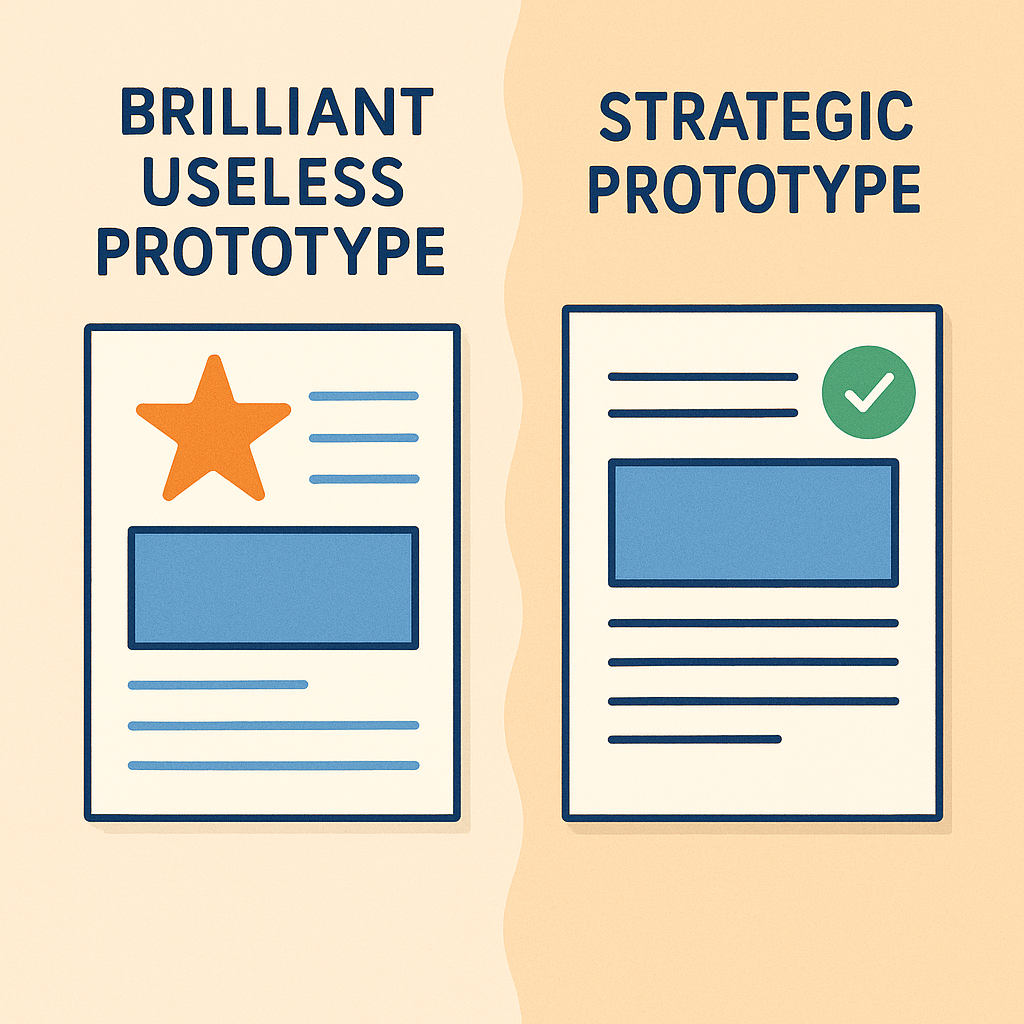The Design Sprint has become a staple in the innovation world. In five days, you can go from an idea to a tested prototype.
It’s fast, creative, and energizing — but also, too often, disconnected from strategy.
At &friends, we’ve seen it many times: brilliant prototypes that impressed everyone… and then quietly disappeared.
The limits of the “wow effect”
A Sprint without clear strategic framing is like a great movie trailer for a film that will never be shot.
The prototype looks good, the team feels productive — but no one really knows what problem it solves, for whom, or how it fits in the organization’s priorities.
When the Sprint ends, enthusiasm fades, and the project joins the long list of “great ideas that never happened.”
A Design Sprint that drives real decisions
To make a Sprint truly strategic, three conditions must be in place before it even starts:
- A defined challenge
— A concrete, business-relevant question: “How might we improve our onboarding experience?” is better than “Let’s imagine the future of work.” - A shared map
— Teams must see where the challenge fits in the broader system: customer journey, business model, technology, brand.
Without that, each participant brings their own version of reality. - A decision framework
— A clear agreement on what will happen after the Sprint: who decides, how results are evaluated, and how the next steps are funded.
Mini-story: the Sprint that unlocked a real strategy
A financial institution wanted to redesign its mobile app.
Before prototyping, the Sprint team used EDGY to map the ecosystem: users, internal processes, data flows, and business goals.
The result? They realized the problem wasn’t the interface, but the lack of connection between channels.
The Sprint’s prototype wasn’t a new app — it was a new experience model linking branch, call center, and mobile.
The lesson: when you start with the system, the right prototype emerges naturally.
The difference between design and direction
A Sprint should not be an end in itself. It’s a decision accelerator — a moment of collective alignment that connects creativity to business strategy.
The question is not “Did we make something cool?”
It’s “Did we learn something that helps us decide better?”
Metrics that matter
- Number of strategic decisions unlocked after the Sprint.
- Time between Sprint and next implementation step.
- Clarity of alignment among participants post-Sprint.
And after?
The best Sprints don’t end with a prototype.
They end with a shared understanding of where to go next — and the confidence to move.
Because the real product of a Design Sprint isn’t an interface.
It’s a decision.
FAQ
Do we still create a prototype?
Of course — but it’s a means, not the goal. The prototype serves to test hypotheses, not to decorate a portfolio.
How do you make sure a Sprint is strategic?
By anchoring it in a clear challenge, visible system map, and explicit decision process.
Is this approach only for big organizations?
Not at all. Smaller teams benefit even more — it helps them focus resources where they’ll have the most impact.
